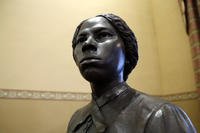Most of the world followed the 1952 Olympic Games as they played out in Helsinki that summer. But a few months later, another set of games were held. This time, they were deep inside North Korea at a communist-controlled prisoner of war camp.
Some 500 participants representing 11 countries in 22 events took part in the 1952 Inter-Camp Olympic Games. Though not recognized by the International Olympic Committee (IOC), the games were held in accordance with the Olympic Charter and instead were hosted by the Chinese People's Volunteer Army.
The Pyuktong Prisoner of War Camp was a remote location near the Yalu River, China's border with North Korea. By 1952, the Korean War had settled into a stalemate, with much of the fighting taking place along the 38th parallel as the two sides took to the negotiating table.
In the meantime, the communists, led by Mao Zedong, were looking for a global propaganda win. They also wanted to encourage more United Nations soldiers to surrender to communist forces. Since 1952 was an Olympic year, Mao, the Chinese People's Volunteer Army and North Korea decided they would hold an event of their own for the captured UN troops.

The communists not only gathered POWs from camps all across North Korea to compete in games, they also designated prisoners to act as announcers, photographers and reporters. Every day, these prisoners published a newsletter containing the results of sports like American football, wrestling, gymnastics and boxing as well as the 100-meter sack race and a tug of war.
There was even an opening ceremony, where the Olympic flame was lit by American POW Willis Stone Jr.
Because it was intended to be used for global propaganda as well as a psychological operation by the Chinese government, meticulous records were kept in accordance with IOC rules. The planning and details of the games and its events include firsthand accounts of the games and interviews with participants (although likely with oversight from communist censors).
For the prisoners, it was a chance to escape the boredom and harsh treatment of captivity in communist North Korea and potentially find their friends while getting better food.

Life in POW camps by 1952 had improved since the outbreak of the Korean War. Early American and South Korean prisoners were subjected to forced marches, torture and starvation in 1950. When the Chinese took over prosecution of the war, they implemented new policies toward prisoners that resulted in better treatment but nothing like what the Inter-Camp Olympics attempted to display. Forty percent of Americans captured by the enemy died in the camps.
Mass starvation and disease still ran rampant through Chinese-run prison camps through the end of the war. Most UN prisoners held by North Korea and China were released under the 1953 armistice agreement, but South Korean prisoners continue to be held by the North to this day, being forced to work in mines along North Korea's border with Russia. Between 1950 and 2008, 79 former South Korean soldiers escaped to South Korea after decades of captivity.
Hundreds of American troops captured by the communists during the Korean War are still missing.
-- Blake Stilwell can be reached at blake.stilwell@military.com. He can also be found on Twitter @blakestilwell or on Facebook.
Want to Learn More About Military Life?
Whether you're thinking of joining the military, looking for post-military careers or keeping up with military life and benefits, Military.com has you covered. Subscribe to Military.com to have military news, updates and resources delivered directly to your inbox.
















